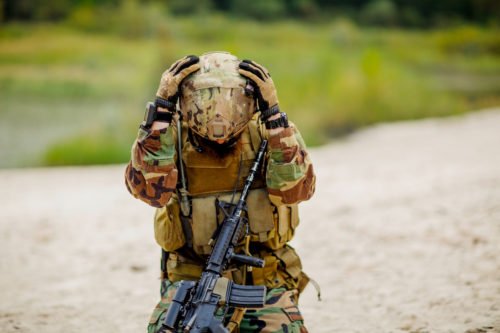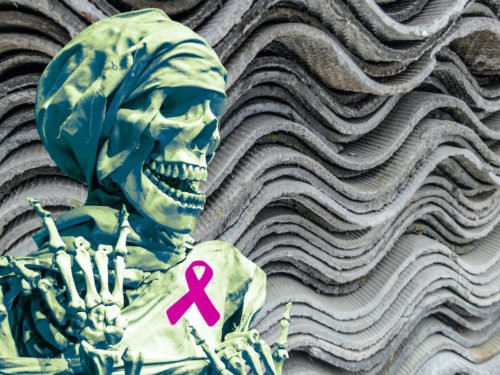Veterans Day is celebrated on November 11th. Now the whole month of November is dedicated to National Veterans and Military Families. We celebrate veterans, active members of the military, and their families who selflessly sacrifice, and defend our country and our freedom. I want to take this time to thank all members of the military and their families for their service!
In their commemoration, Maryville University (Maryville University offers online bachelor’s, master’s, doctoral, or certificate programs for nearly 150 years) put together a guide to help friends and loved ones understand our heroes, particularly those suffering from PTSD:
UNDERSTANDING VETERANS WITH PTSD
Servicemen and women oftentimes face unique challenges when leaving active duty and readjusting to civilian life. Many times, re-establishing their family roles, finding a civilian job, or just living life without as much structure as they are used to can be challenging.
At the same time, many soldiers return home with post-traumatic stress disorder (PTSD). Approximately 7% to 8% of the population experiences PTSD during their lives but the highest rate is among veterans – up to 25% of veterans experience PTSD within a given year and 13% of military women do so. In military personnel, PTSD can surface due to experiencing combat or sexual violence.
PTSD is diagnosable when a person has experienced a traumatic or dangerous event and, subsequently, a set of four clusters of symptoms:
- symptoms dealing with intrusion (flashbacks, nightmares, recurring thoughts)
- symptoms of avoidance (avoiding places/people/objects that are a reminder of the trauma)
- negative alterations in cognitions and mood (negative thoughts about themselves/ others/ the world, feelings of guilt and blame, difficulty remembering facts about the event, loss of interest in previously enjoyed activities or people, feelings of depression)
- alterations in arousal and reactivity (being easily startled, feeling tense, edgy or anxious, having outbursts of anger, difficulty sleeping)
PTSD is devastating for the individuals experiencing it, as well as for their loved ones. Unfortunately, it is often accompanied by substance abuse, which itself can increase depression and suicidal thoughts. Drinking and/or using drugs as a way to cope with internal anguish should be avoided since it only worsens the situation.

PTSD Risk Factors
PLOS One published a meta-analysis reviewing 32 different pieces of research (21 retrospective studies, 4 prospective studies, and 7 cross-sectional studies) and found risks associated with the development of PTSD in military personnel.
They include:
- Previous exposure to adverse life events: Being exposed to traumatic experiences (such as sexual abuse or assault) prior to joining the military can increase the risk of PTSD.
- Witnessing injury or death: If a servicemember witnesses an injury or death, or discharges his or her weapon during active duty, there is a higher risk of developing PTSD.
- Various military characteristics: Military rank and occupation, branch of service, length, and number of deployments have all been found to contribute to PTSD risk because each factor determines how likely it is the soldier will be part of active combat.
- Deployment stressors: Being exposed to excessive temperatures, a lack of privacy in the unit, and worrying about family can all increase a vet’s risk of PTSD.
- Gender: Female veterans develop PTSD more often than their male counterparts, possibly due to higher susceptibility to depression, experiencing less cohesion in the unit, and being more sensitive to threats.
- Race: Minorities have been found to be more susceptible to PTSD. However, it’s unclear if this is because they tend to have more of the other risk factors, or because they are assigned to combat more often.
- Level of education: The lower a serviceman or woman’s educational level, the higher the risk of PTSD, potentially due to not having learned effective coping skills or limited access to helpful resources.
PTSD and Post-Deployment Risks
PLOS One’s research also found that PTSD risk can rise after returning home due to various post-deployment factors.
One factor is social support, “a positive recovery environment after trauma exposure may serve as a protective factor” for PTSD. Having a supportive network gives the self-reliance and self-security needed to fend off this condition. Work status after deployment is another potential risk factor as well. Being unemployed and unable to provide financially for the family may instigate PTSD.

HELPING VETERANS WITH PTSD
The first step is education. Knowing how someone with PTSD typically reacts (they may appear angry, tense, worried, numb, distant, or detached, and may also be easily irritated, jumpy, nervous, more demanding or protective) is important since these responses can affect family and friends, who may feel hurt, dejected, and/or angry. So, creating a positive response first requires that you understand these responses to be symptoms of this condition.
The second step is to get the veteran the outside help he or she needs. This may involve counseling-type therapy sessions (either one-on-one, group, or both), or even family therapy so everyone can work through the PTSD together. Psychology Today offers the ability to do a quick search for local therapists specialized in PTSD based on your geographic location. This site even provides information to help you make a more informed decision (a brief bio with credentials, specialties, treatment approaches, cost per session, and insurance plans accepted).
VA Specific Services
The National Center for PTSD also offers The Guide to VA Mental Health Services for Veterans and Families, which shares the types of treatments that are available through the Department of Veterans Affairs (VA) and what happens when you request help.
Eligibility for these types of services is based on a number of factors, but it generally involves completing active military service in one of the U.S. branches of the military, being honorably discharged, or being a National Guard member or Reservist who served in a combat zone. If the person is deemed eligible, he/she will likely be referred to a local VA facility. There are nearly 2,000 facilities and you can use the online locator to find the closest ones to you.
The Vet Center Program is another option available to any active or veteran military member who has served in a combat zone or hostile area, has experienced military sexual trauma, or has provided emergent medical care or mortuary services. Services offered at these facilities include counseling, outreach and education, substance abuse assessment and referral, employment assessment and referral, VBA benefits assistance, and screening and referral for other issues, such as traumatic brain injury (TBI).
PTSD and Psychedelics
In relation to the treatment of PTSD. Recently, psychedelics are starting to be recognized for their positive results in dealing with PTSD, treatment-resistant depression, anorexia, and addiction. For instance, numerous studies have shown that ketamine has antidepressant and anxiolytic effects and helps decrease symptoms for much longer periods of time.

For more in-depth research and resources, check out MAPS (Multidisciplinary Association for Psychedelic Studies – non-profit research and educational organization that develops medical, legal, and cultural contexts for people to benefit from the careful uses of psychedelics and marijuana) and The Centre for Psychedelic Research (founded by Tim Ferriss, neuroscientists, and other philanthropists focuses on the use of psychedelics in mental health care and as tools to probe the brain’s basis of consciousness).
ASBESTOS EXPOSURE & VETERANS
Another topic that veterans and their families should be aware of is asbestos and mesothelioma. Each year, approximately 3,300 people are diagnosed with malignant mesothelioma, a type of cancer caused by exposure to asbestos. Of those patients, nearly a third are veterans who were exposed to high levels of toxic dust and fibers while serving on military bases and working on ships or in shipyards.
Asbestos is a durable, light, and corrosion and fire-resistant material that was used to insulate boiler and engine rooms on Navy ships, to line brakes on vehicles and aircraft, and even in some mess halls and military barracks. Asbestos was used from the 1930s until the mid to late 1970s when it was discovered that it poses a toxic threat. As a result, service members encountered varying levels of toxic asbestos dust and fibers.
Asbestos wasn’t just harmful to the service members who worked with it, their families were often exposed to the toxic dust. Microscopic pieces of asbestos fibers attached to the workers’ clothing, hair, and skin and often became embedded in furniture, carpet, and other areas of their homes. Doctors refer to this as ‘indirect’ or ‘secondary’ exposure, and it can be just as harmful as working with the material directly. Repeated asbestos exposure — in any form — is potentially dangerous and can cause health problems.

Again, I want to thank all the members of the military and their families for their sacrifice. Understanding what veterans go through is important to help them overcome their many challenges and those experienced by their families. Refer to my article Veterans Day … Resources to get more resources for veterans.
To a Healthier Fitter You,
The Fitness Wellness Mentor



